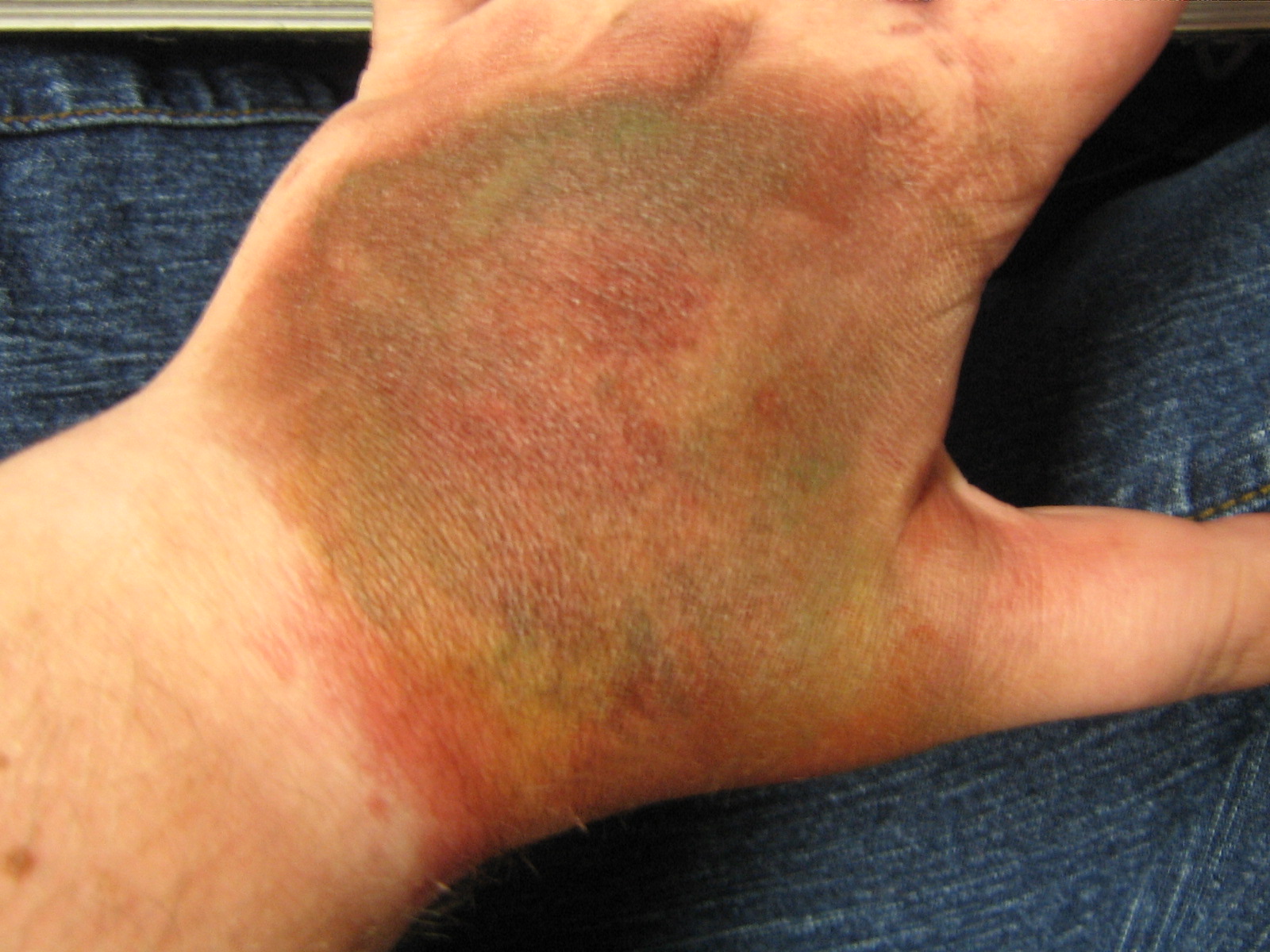

These types of chemical burn should be soaked with mineral oil while waiting for medical attention. It has been shown that irrigation received within 10 minutes of the burn reduces the severity of the wound and time of stay in hospital.Ĭhemical burns involving elemental metals (lithium, potassium, sodium and magnesium) should not be irrigated with water as this can result in a chemical reaction that causes burns to worsen. Wash for at least 20 minutes, taking care not to allow runoff to contact unaffected areas. Irrigate the affected area with copious amounts of water.What is the management of a chemical burn?īasic first aid should be administered as soon as a chemical burn has occurred. Vision changes or complete loss of vision if chemicals get into the eyes.
Chemical burn on hands skin#
Deep tissue injury to the skin is caused by alkali chemical burns, as they produce a liquefaction necrosis that involves denaturing of proteins as well as saponification of fats.Formation of black dead skin ( eschar) - this occurs particularly with acid chemical burns as they produce a coagulation necrosis by denaturing proteins.Pain or numbness at the site of contact.Redness, irritation, or burning at the site of contact.Some signs and symptoms of chemical burns include:

Another important factor is concentrated forms of some acids and bases generate a large amount of heat when diluted this results in a thermal burn as well as a chemical burn. The solid pellet sits in the stomach for a longer period, thus more severe burns sustained. Swallowing a solid pellet of an alkaline substance highlights the importance of these factors. Physical form of the agent (ie: solid, liquid, gas).The signs and symptoms of a chemical burn depend on several factors, including: What are the signs and symptoms of chemical burn? Gaseous anhydrous ammonia used in fertilising manufacturing can cause severe burns.Cleaners and detergents used in dilute form are not highly corrosive.Sodium hydroxide and potassium hydroxide - depending on the concentration - may be very corrosive Hydrochloric acid – concentrations range from 5–44% Hydrofluoric acid – a weak acid and in a dilute form does not burn or cause pain on contact Used in engraving, metal refining, electroplating and fertiliser manufacturing.Sulphuric acid – concentration ranges from 8% to almost pure acid A substance with a pH of 7 is considered neutral and does not burn.A very strong base has a pH of 14 and may also cause a severe burn.A very strong acid has a pH of 1 and may cause a severe burn.The strength of acids and bases is defined by the pH scale, which ranges from 1–14.The main cause of chemical burn is contact with strong acids or bases. Chemical burn from a strong acid or alkali is also known as a caustic burn. Very mild chemical burns result in irritant contact dermatitis.

Chemical burns are usually the result of an accident and can occur in the home, at school or more commonly, at work, particularly in manufacturing plants that use large quantities of chemicals. Chemical burn is a burn to internal or external organs of the body caused by a corrosive or caustic chemical substance that is a strong acid or base (also known as alkali).


 0 kommentar(er)
0 kommentar(er)
